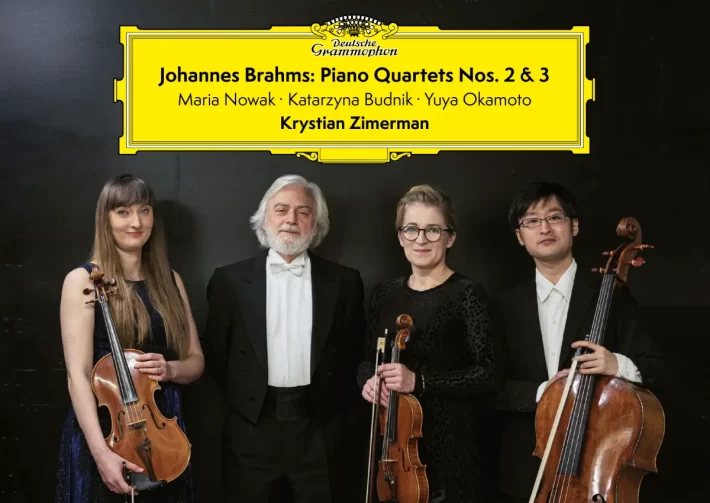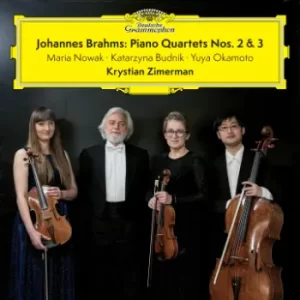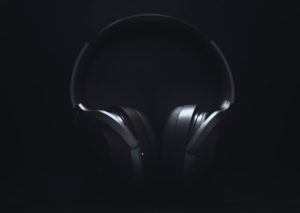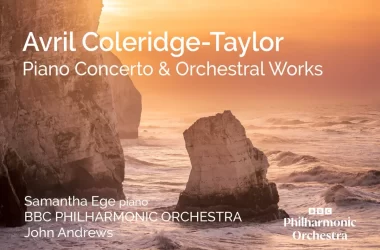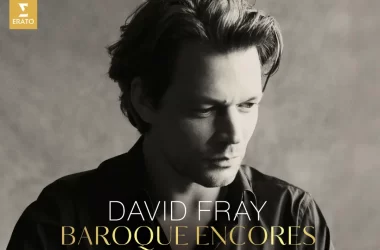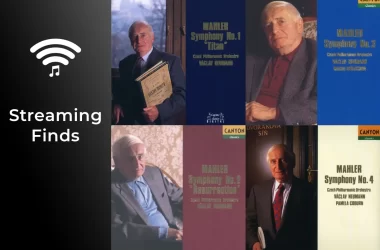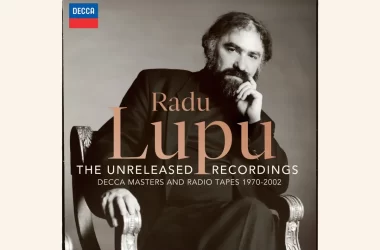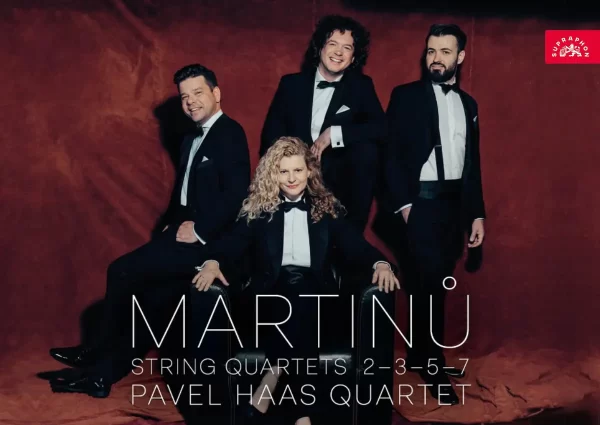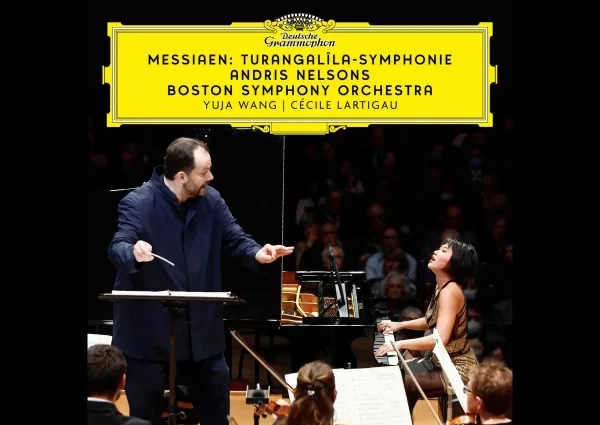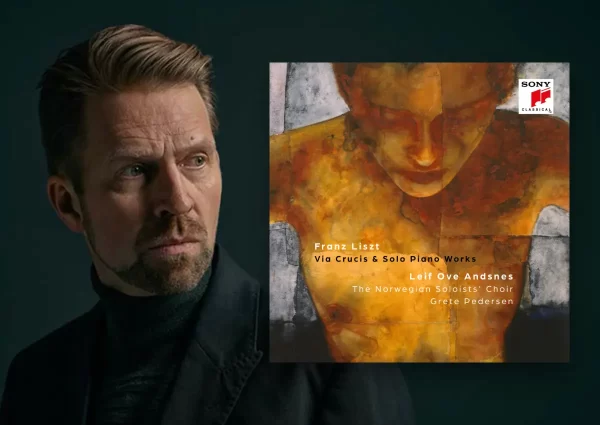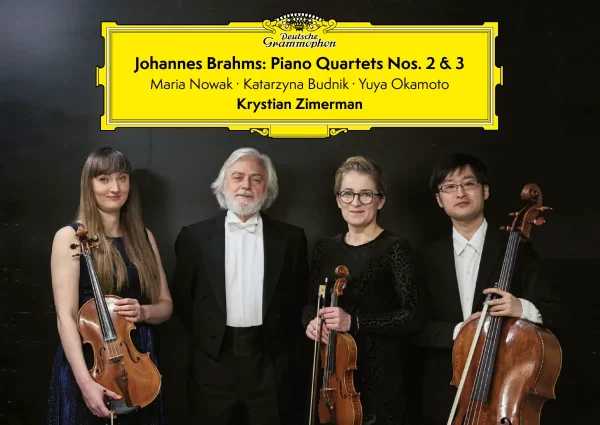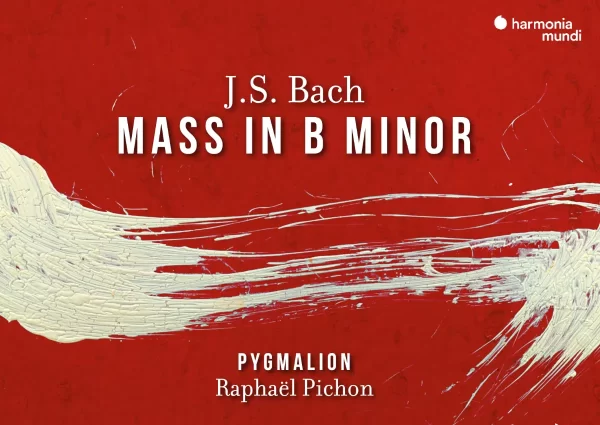When asked how he found his fellow ensemble members for a new recording of Brahms’ second and third piano quartets, Krystian Zimerman says, “More or less by coincidence.” In the spirit of freedom, he adds that the music making here was for fun, a way to enjoy the pleasures of music. While Brahms’ music doesn’t necessarily always speak to spontaneity, his writing can be quite rhapsodic at times. In listening to this album, I was therefore curious to hear how these four musicians would come together to capture this spirit and still communicate as a unit.
From the outset of the C minor Quartet (No. 3, Op. 60), communication is already impressive: this is as nuanced as an opening gets and the exquisite layering of the strings in color and vibrato is hard to miss. The pianist, too, seems at complete ease and familiarity with his collaborators, taking a step back in the accompanimental textures to let the violin shine or a rich, secondary voice from the cello to surface.
Brahms does use the piano in a more solo capacity as a way to drive the more furious and charged sections, and Zimerman maximizes these opportunities in powerful and orchestral fashion. The Scherzo (track 2) brings out admirable clarity of phrasing and articulation. The piano’s staccatos are neat and the momentum electric; the strings follow suit, so we can also again appreciate the wonderful integration of the different sound profiles.
For me, the Andante (track 3) was the pinnacle of the quartet’s finessed dialogue and lyricism. Here, the members do their utmost to bring out its comforting warmth and sensitivity. The spotlight is on Yuya Okamoto, the group’s cellist: Zimerman mentions how he met Okamoto at a competition, taking an immediate liking to his playing. When I listened to the rich timbre, luscious legatos, and deeply vocal quality, I could easily see why: Okamoto is able to channel nuanced fluidity in his lines and give them meaning, each pause letting us perceive the tenderness with which Brahms writes. The pianist shows a seasoned ability to read his colleague, seamlessly matching the ebbs and flows.
In the Finale (track 4), the violin must shoulder much of the energetic load, and Maria Nowak does a fine job in this endeavor. There is the right sense of urgency in her playing that not only helps drive the movement forward, but also complements and encourages the gradual thickening of textures as the other strings enter.
The second piano quartet (Op. 26) appears here after the third, and is a wise pairing in terms of character balance. While the group successfully brought out the darker personality and dread of the C Minor quartet, we hear a very different personality emerge in the Allegro (track 5). The cello invites us in with a charming solo while the other strings offer playful, anticipatory staccatos for contrast. Meanwhile, the piano meanders seamlessly and innocently between the parts. Brahms would not be Brahms, however, without the symphonic element, which makes itself duly present in the middle section. The fine blending I mentioned earlier again proves a boon, now in recreating the sound of a much larger group.
The slow movement sees a reversal of textures, with the strings now assuming the supporting role: while two-note phrases have a penchant for sounding mechanical if not treated with care, they’re well thought out here. The result is a peaceful rocking motion that offers fluidity with enough substance, on top of which Zimerman’s lines can sing expressively.
Of the other movements, the high-spirited Finale is a delight as much as it is a testament to the group’s synchronicity. Amidst the moments of frenzy are ones like 4’35”: the group’s unexpected turn on a dime to excited whispers shows a great deal of control and versatility.
Through these performances, the ‘coincidence’ that Zimerman mentions is nowhere to be found—and in the best possible way. The comfort and joy that the instrumentalists share with each other are evident throughout, whether they’re playing as a full ensemble, a delicate string pairing, or having a one-on-one conversation with the piano. This is an urgently recommended listen.
Album Details |
|
|---|---|
| Album name | Brahms – Piano Quartets No. 2 & 3 |
| Label | Deutsche Grammophon |
| Catalogue No. | 4864650 |
| Artists | Krystian Zimerman (piano), Maria Nowak (violin), Katarzyna Budnik (Viola), Yuya Okamoto (cello) |

